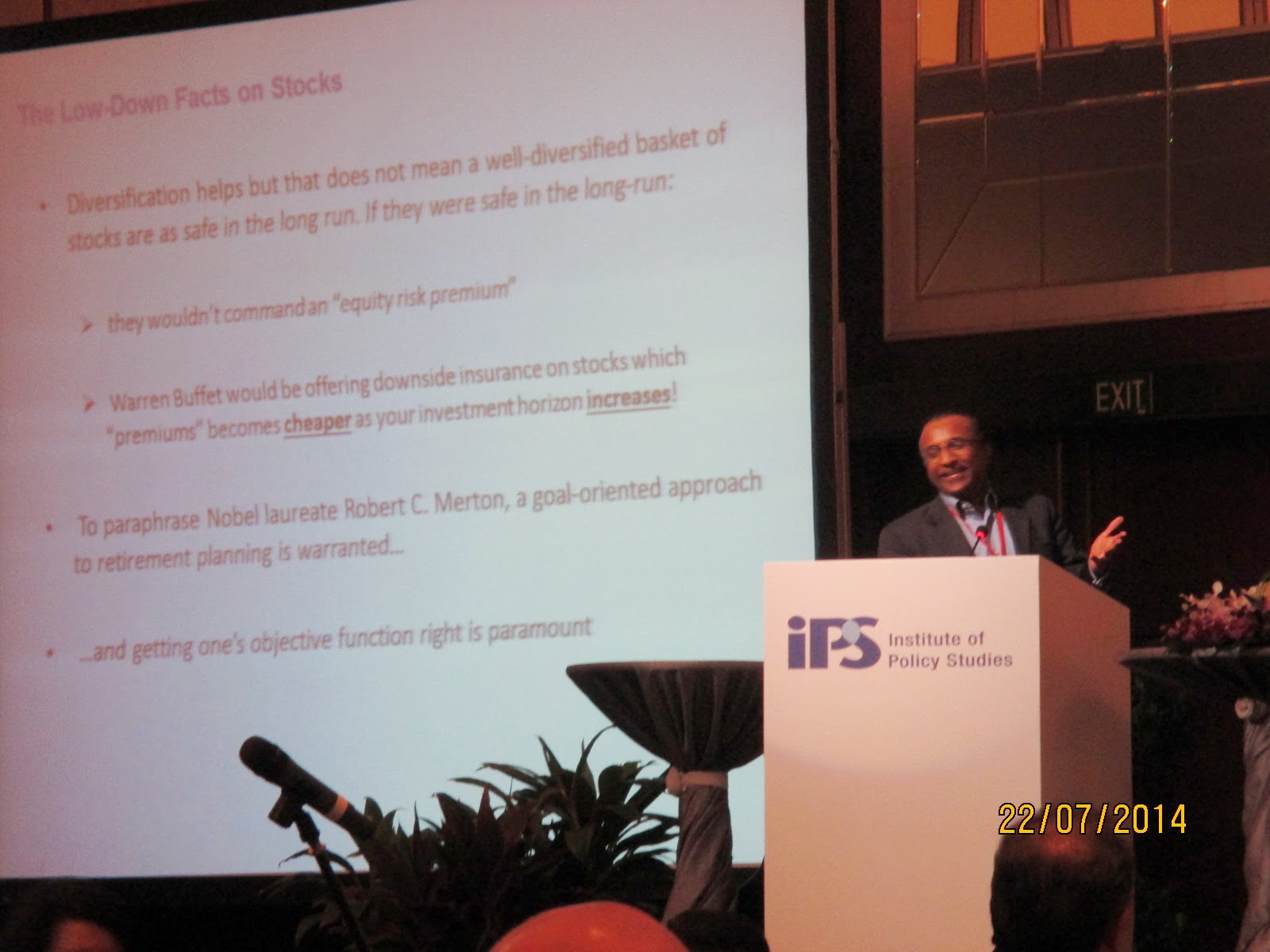The final speaker in the afternoon session's panel discussion was Associate Professor Hui Weng Tat from the Lee Kuan Yew School of Public Policy. He tried to suggest ways in which the CPF could help to meet not only the basic retirement needs of Singaporeans but to maintain their current lifestyles at retirement.
Prof Hui said that in order for people to maintain their current lifestyles at retirement, they would have to have a retirement income that has an IRR (income replacement rate) of 60 to 80%.
He shared that the CPF provides a higher IRR for lower income groups than it does for people who command higher salaries, typically, of more than $5000 a month due to a contribution cap set by the government.
In his opinion, this cap should be raised and CPF members should be allowed to contribute more to their CPF accounts if they want to.
I feel that Prof Hui missed the point that the CPF is primarily meant to cater to the needs of lower income Singaporeans. This is the reason for the extra 1% of interest paid only on the first $20K in our CPF-OA and the first $40K in our CPF-SA.
If we are financially more capable, we will have to find ways to make more money for our retirement years ourselves. We shouldn't burden the system.
I also wonder if there is a need to maintain pre-retirement lifestyle at retirement. Is an IRR of 60 to 80% really necessary? Could we not lead a simpler life during retirement? In my case, although some would argue that I already have a simple life, I could give up my little car when I retire, for example.
 |
| With the purchase of housing, the IRR falls naturally. I feel that monetisation is a solution in funding retirements for some. |
It is difficult to have our cake and eat it too. Although Prof Hui does not seem to like the idea of monetisation of our homes as an option for retirement funding, we have to be pragmatic.
Prof Cherian said that the Americans are quite pragmatic when it comes to downsizing their homes if there is a need and why shouldn't Singaporeans be pragmatic too?
Prof Hui made a point about raising the CPF withdrawal age for younger workers who are likely to live a longer life on average. I do agree with this as life expectancy increases some 2 to 3 years every decade. This helps to address the issue of increasing longevity and keeping CPF retirement payouts more sustainable.
See slides: here.
Related posts:
1. AK attended forum on CPF.
2. Young working Singaporeans, you are OK.
3. Why a wealthy nation cannot afford to retire?






















